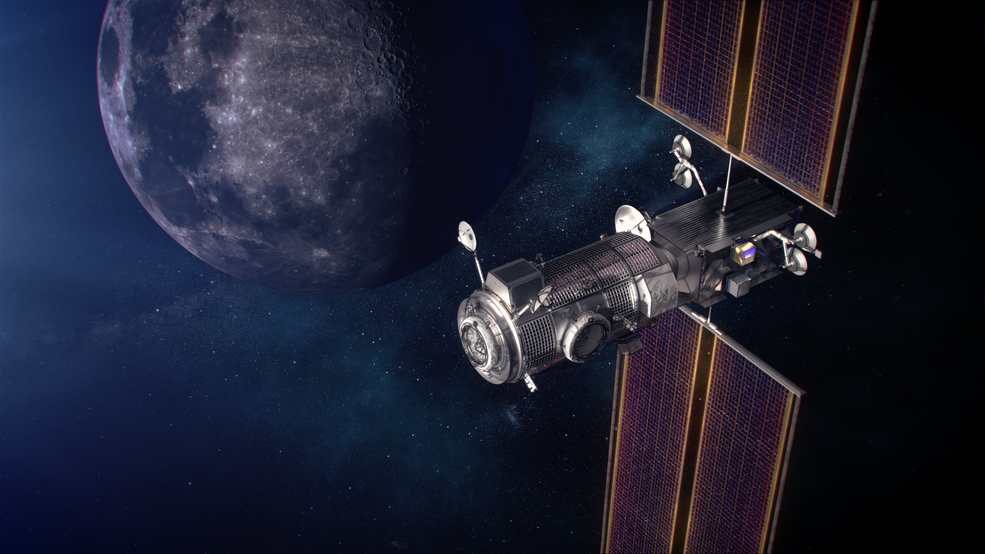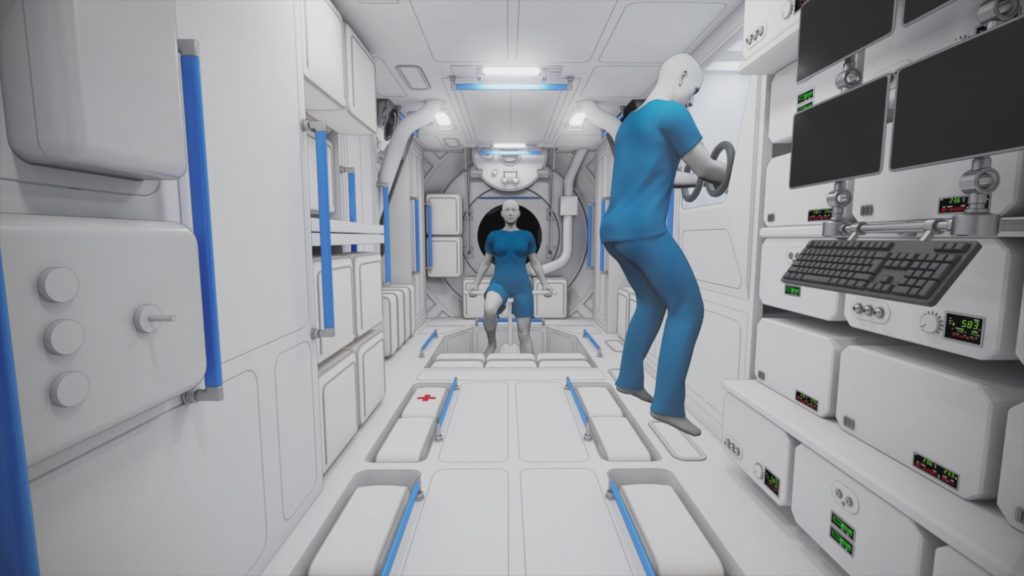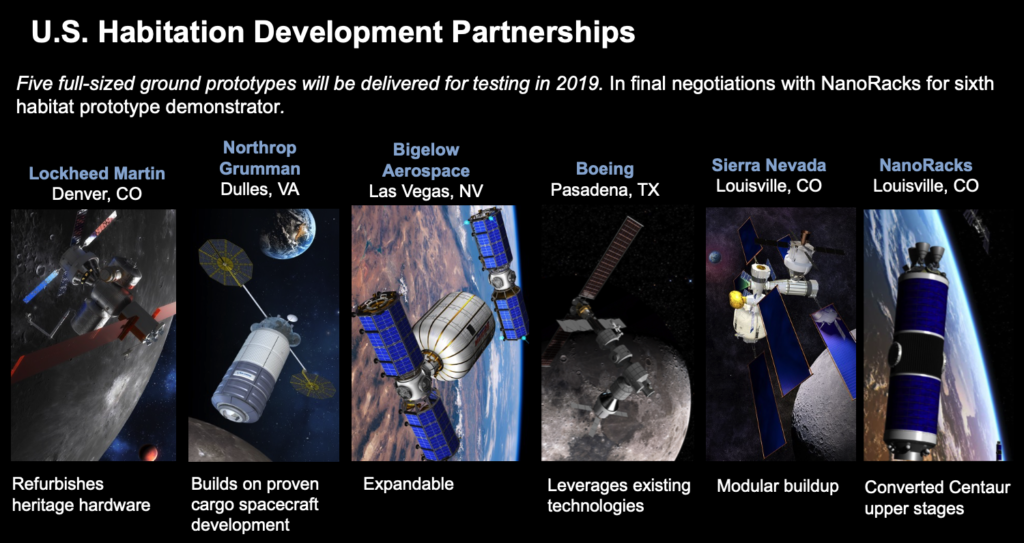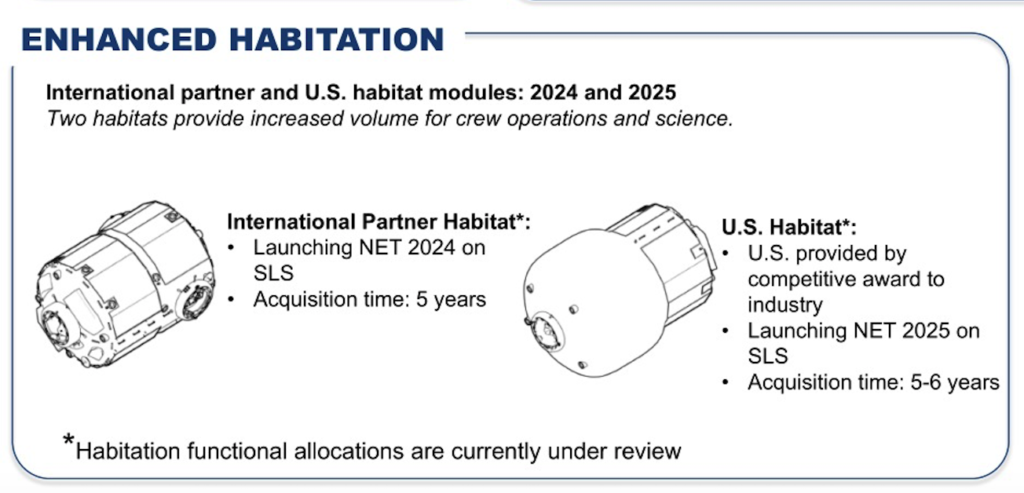Original raisons d’être for the Lunar Gateway were to study long-term human endurance and sustainable life support in a deep space environment, and prepare for missions to Mars and the asteroids. The Lunar Gateway was renamed the Deep Space Gateway as part of the big push for the Artemis program. What is the current state of plans for life support and space habitation on the Lunar Gateway?
Some background is in order. Several years ago, NASA created the NextSTEP program to support crewed space exploration. In 2014, NASA’s NextSTEP program awarded contracts to several firms to expand habitation and other capabilities of the Orion space capsule. The total amount awarded for life support and habitats was about $5.5 million. NextSTEP 2 was more ambitious, funding concept studies and the construction of entire prototypes for deep space habitats. Contracts of about $10 million per awardee were awarded for 24 months of work, for a total amount of $65 million for work over 2016-2018. Awardees (current names) were Lockheed Martin, Northrup Grumman, Bigelow Aerospace, Boeing, Sierra Nevada and Nanoracks. Their visions for space habitats are shown below. (Bigelow has substantially scaled back operations since then.)
NextSTEP 2 was a prelude for the competition for the initial Lunar Gateway space habitat module called the Habitat And Logistics Outpost module (HALO). Then on 5 June 2020, an initial $187 million contract was awarded to Northrup Grumman for the HALO module for the Lunar Gateway, which was targeted for launch by 2023 (NASA, 2020). It was felt that Northrup Grumman’s existing Cygnus cargo vehicle (used for the International Space Station) was proven technology that would allow for faster development and an earlier launch.
Plans for HALO have gone through several iterations. It is still a habitat, but probably now it also has broader capabilities since it may be the only crewed module for awhile. The contractor for HALO Habitat And Logistics Outpost module (HALO) will almost certainly receive considerable additional funding. A ball park estimate would be at least US $1 billion for just the habitat (even if “new space” economies are invoked) and possibly several billion. This does not include funding for the propulsion or energy systems, which have been awarded to Maxar.
The HALO module is really just a place for astronauts to transfer to the Moon. It does not meet the earlier goals to test human endurance and sustainable life support in deep space. However, the Lunar Gateway is planned to have a second space citation module called iHab, which supposedly will have long-term, sustainable life support capabilities. International entities such as the ESA and JAXA are supposed to build and pay for it, so you don’t have to hold your breath for Congress to fund it. The ESA has developed significant closed-loop life support via its MeLISSA program (covered earlier by Sustainspace), so they certainly have advanced capabilities in closed-loop life support.

Artist’s concept of the Gateway power and propulsion and HALO in orbit around the Moon. Credit: NASA
Up-to-date details on iHab are scarce. High level requirements for deep space habitats have been determined by past studies, but it is unclear which of those iHAB will contain. Based on relatively easy-to-deploy capabilities that have already been developed, is expected that, at minimum, iHAB will provide capabilities for water recycling, modest food production (including plants), partial CO2 recycling and exercise.
The construction and deployment of the HALO and iHAB modules will be a significant expansion of the anthroposphere into space, and the most durable expansion into deep space. How long the Gateway will endure and be crewed are still open questions, but it is still a concrete step towards grander visions of humanity in deep space.
Further Information
- European Space Agency, Gateway.
- NASA, NASA Awards Northrop Grumman Artemis Contract for Gateway Crew Cabin, 5 June 2020.
- Vienna Region, Austrian Design for Astronauts at International Space Station (post on International Habitat Module (iHAB) for Lunar Gateway), December 10, 2019.



